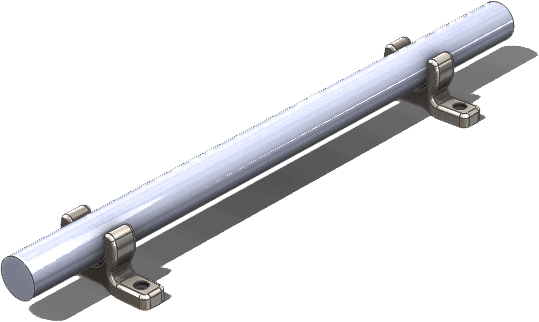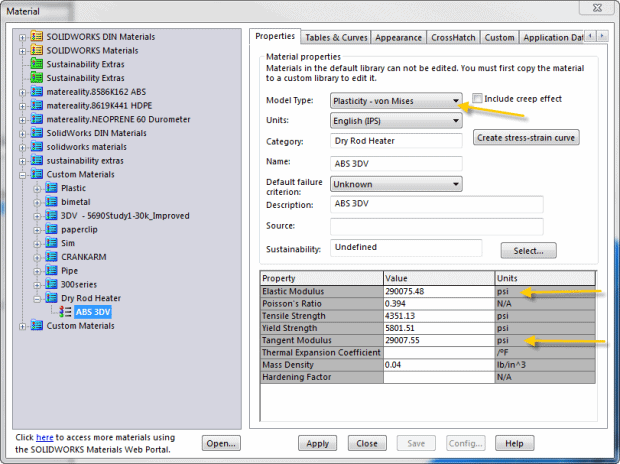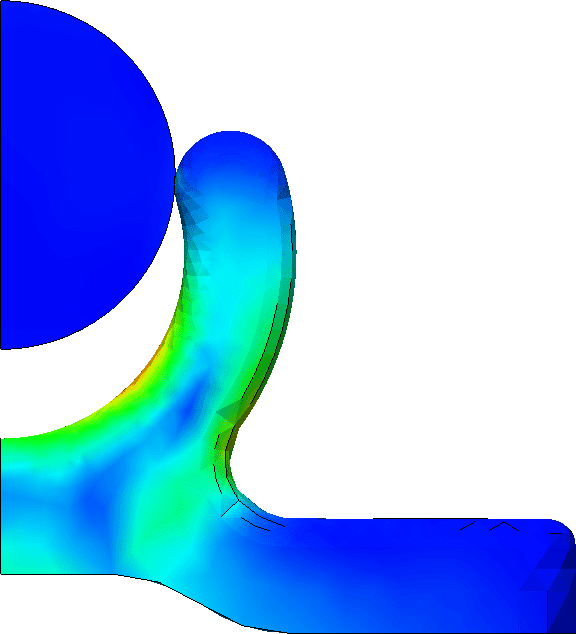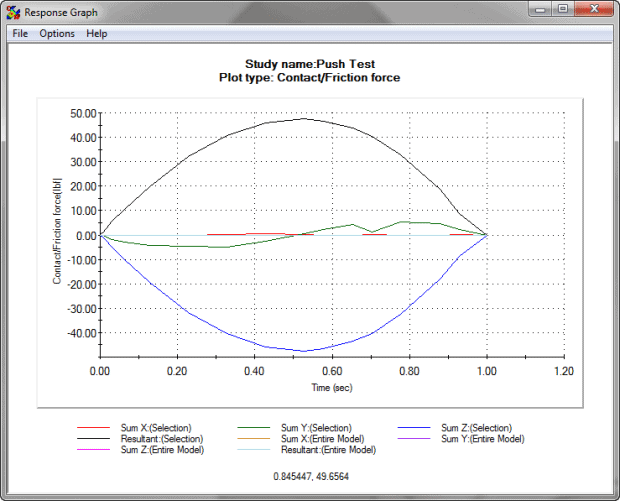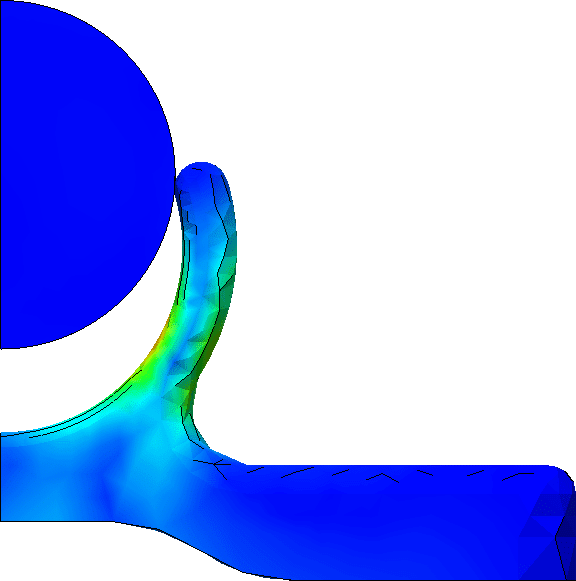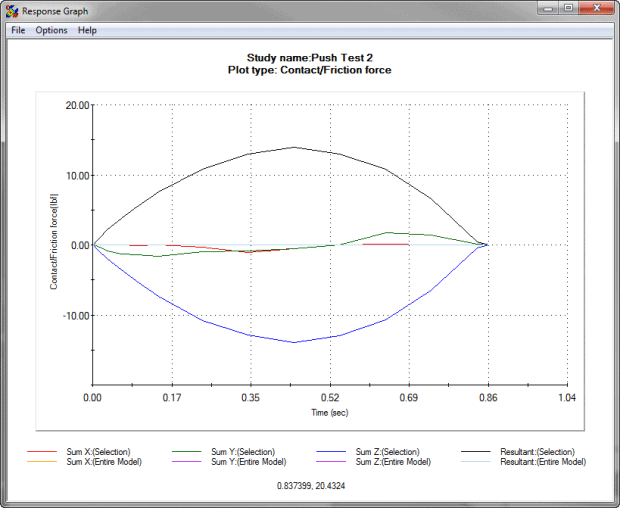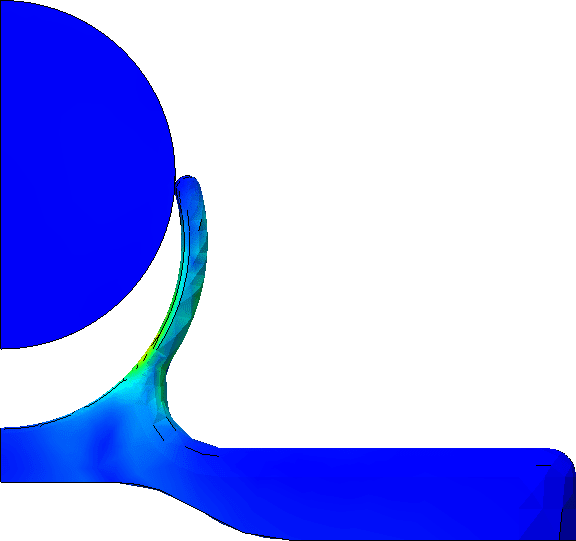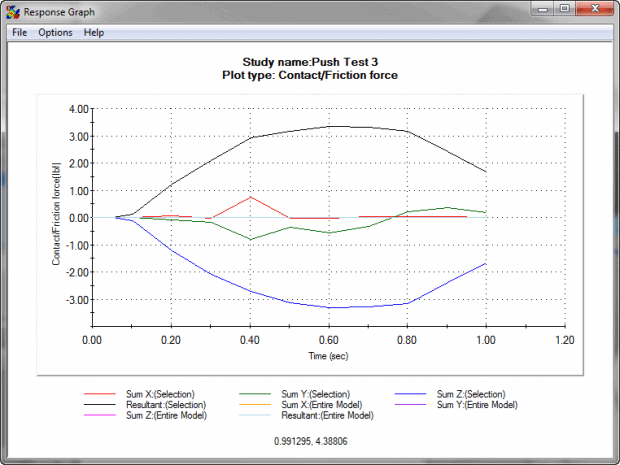ABS Snap Fit Non-Linear Static Study
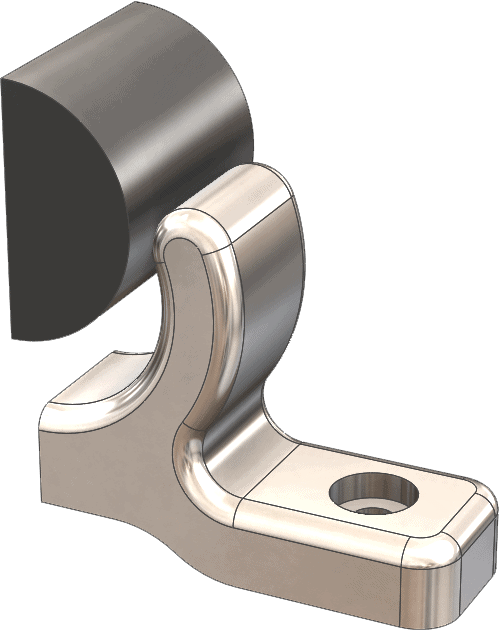
I recently acquired a dehumidifying rod from a family member and it was missing the mounting components. After looking everywhere in my family members basement we could not locate the missing items. So what is some one who has access to SOLIDWORKS and a 3D Printer to do? That’s right lets make our own.
A dehumidifying rod is an electric heater that facilitates natural convection in enclosed areas like safes, vehicles, small rooms etc. The first place to start is thermal side of things and material selection. The Uprint Plus uses an ABS like material for the printer with a melting temperature of 600 degrees F. The rod runs at a constant 100 degrees F with a maximum of 125 degrees F. The wide temperature factor of safety lead me to proceed with a 3D printed design.
The dehumidifying rod mounts had two requirements. One that they could be screwed down to secure the rod, and that the rod can be easily removed for maintenance if needed. This lead to a snap fit design. The original design was stout and bulky and left me wondering if it was overkill. This is where SOLIDWORKS Simulation is introduced into the design phase. I wanted to verify that the rod could be removed and “snapped” back into place easily. Because the material is an ABS and the snap fit is a sliding contact this requires a Non-Linear analysis.
The Simulation setup was straight forward. The rod will remain stationary and the the Clip will be moved a prescribed displacement until it “snaps” onto the rod. To simplify the model and speed up the run time the analysis will be completed using symmetry. A no penetration contact was specified on the contacting faces of the rod and the clip. A mesh control was specified in these contact areas as well.
Steel was the material choice for the rod and an modified default ABS was used for the clip. The ABS was copied to a custom material folder and changed to be a Plasticity- von Mises material model. The true Stress-Strain curve of the ABS material was unknown so a representation of the curve known as a Bilinear stress-strain curve was used. This curve uses the Tangent modulus roughly 1/10th of the Elastic modulus, as the second portion of the curve beyond yield.
The results from the first design did indeed show that it was too stout and required a large force to push the clip onto the rod. The contact plot clearly shows a force requirement of 45 lbs. to spread the clip at the widest point. This force value lead to a redesign of the clips upper arm.
Design Two narrowed the upper arm and reduced the force required by 30 lbs. The force however was still too high and required another design change.
The Third and final design change reduced the arm thickness as well as changed the lower fillet size. The changes reduced the force required to “snap” the rod in place to a reasonable 3.5 lbs.
SOLIDWORKS Simulation Premium Non-Lienar analysis allowed me to design a mounting clip that holds the dehumidifying rod firm and in place without over design. Quickly and easily I was able to walk through multiple design iterations and Simulations verifying a reasonable “snap” force. I am happy to report the dehumidifying rod is in place and has been working for a couple of weeks without issue. Have you used a Non-Linear analysis before or have questions? Let me know in the comment section below!

 Blog
Blog 